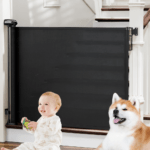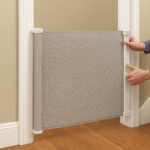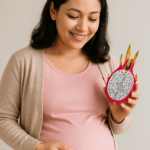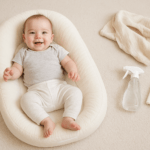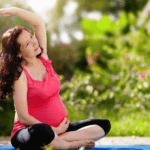Acne is a common skin condition that affects teenagers worldwide. This article will delve into the various aspects of teenage acne, from its causes and types to effective management strategies. Let’s navigate the challenging terrain of teenage acne together.
We will delve deep into the world of teenage acne. We will explore the causes behind those troublesome breakouts, the various types of acne lesions, and the emotional toll they can take on teenagers. More importantly, we will equip you with valuable insights into effective management strategies, empowering teenagers and their families to face this challenge head-on.
So, join us as we unravel the mysteries of teenage acne, aiming to provide clarity, confidence, and a path towards clearer, healthier skin.
What Is Teenage Acne?
Defining Acne
Teenage acne is a prevalent skin condition characterized by various lesions that commonly appear during adolescence. These lesions include pimples, blackheads, whiteheads, and, in severe cases, cysts and nodules. It’s often called “teenage acne” because it frequently manifests during this period.
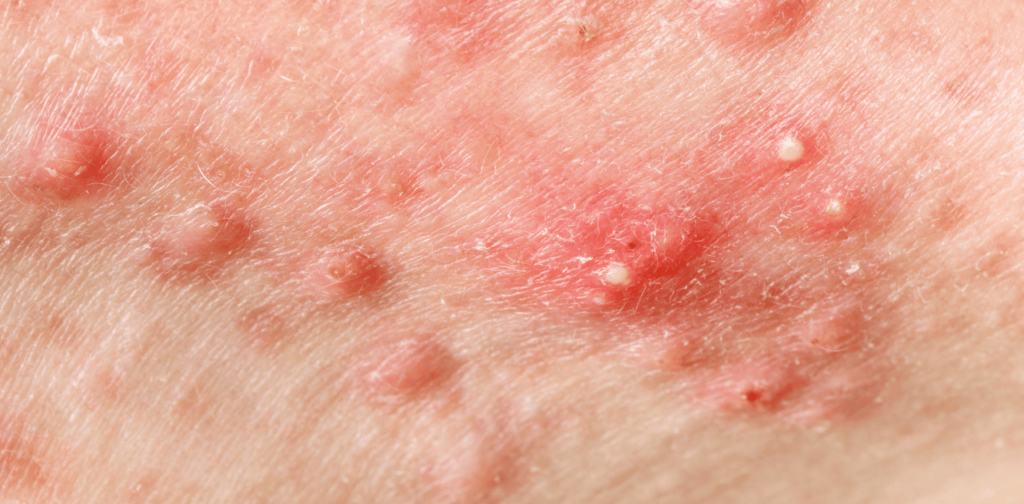
Types of Acne
- Comedones: These are non-inflammatory acne lesions that can be further categorized into two types:
- Blackheads: Small, dark spots on the skin’s surface caused by clogged hair follicles.
- Whiteheads: Small, white, or flesh-colored bumps resulting from blocked hair follicles.
- Papules are small, raised, red bumps on the skin that can be tender to the touch.
- Pustules are pimples filled with pus, giving them a noticeable white or yellow center.
- Nodules: Large, painful lumps that form beneath the skin’s surface, often requiring medical attention.
- Cysts: These deep-seated, pus-filled lumps can be particularly painful and potentially leave lasting scars.
What Causes Teenage Acne?
Acne is a multifactorial condition resulting from a combination of various factors:
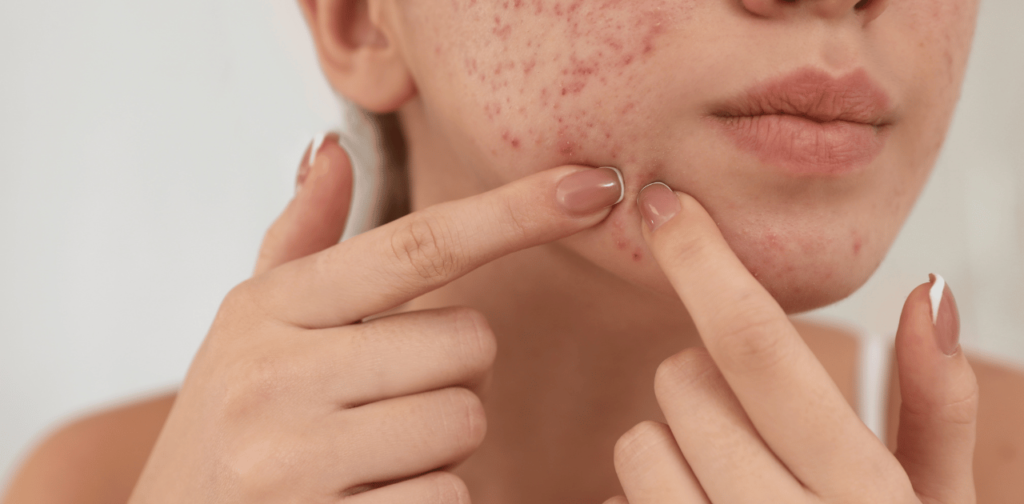
Hormonal Changes
One of the primary triggers of teenage acne is hormonal changes, especially the surge in androgens during adolescence. These hormones stimulate the skin’s sebaceous (oil) glands, leading to increased oil production. Excess oil can clog pores, setting the stage for acne development.
Genetics
A teenager’s genetic predisposition can significantly affect their susceptibility to acne. If there is a family history of acne, it increases the likelihood of a teenager experiencing the condition.
Diet
Dietary choices can influence the severity of acne in some individuals. Foods with a high glycemic index, like sugary and processed items and dairy products, have been associated with exacerbating acne in some instances.
Skincare and Hygiene
Proper skincare practices are crucial in preventing and managing acne. Using harsh products or neglecting skincare routines can irritate the skin, leading to acne flare-ups. Establishing a gentle and consistent skincare regimen is vital for avoiding acne.
Understanding these factors contributing to teenage acne is essential in developing effective strategies for prevention and treatment.
The Impact of Teenage Acne
Emotional Toll
Teenage acne can have a profound impact on a teenager’s emotional well-being. It often takes a toll on their self-esteem and mental health, potentially leading to increased levels of anxiety and depression. The visible nature of acne lesions can make teenagers self-conscious and negatively affect their self-image.
Scarring
In severe cases, teenage acne can lead to permanent scarring. Whether raised or pitted, these scars can linger long after the acne has subsided. The presence of faults can significantly affect teenagers’ self-confidence, as they may feel self-conscious about their skin’s appearance.
Managing Teenage Acne
Proper Skincare
- Gentle Cleansing: Establish a skincare routine using a mild cleanser twice daily. This helps keep the skin clean without causing excessive dryness, which can exacerbate acne.
- Non-Comedogenic Products: Opt for skincare and makeup products labeled “non-comedogenic.” These products are designed not to clog pores, reducing the risk of further breakouts.
Medications
- Over-the-counter (OTC) Treatments: Many OTC products contain active ingredients such as benzoyl peroxide, salicylic acid, or alpha hydroxy acids, which can effectively target acne. These readily available products can be a good starting point for mild to moderate acne.
- Prescription Medications: For severe or persistent cases of acne, it’s advisable to consult a dermatologist. They may prescribe topical or oral antibiotics, retinoids, or hormonal treatments tailored to the individual’s needs.
Lifestyle Changes
- Healthy Diet: Encourage teenagers to maintain a balanced diet of fruits, vegetables, and whole grains. Reducing the consumption of high-glycemic-index foods and dairy products may also help in some cases.
- Hydration: Staying well-hydrated is essential for healthy skin. Encourage drinking plenty of water to maintain skin moisture and overall well-being.
- Stress Management: Teach stress-reduction techniques, such as meditation and regular exercise. Stress can exacerbate acne, so managing it can benefit mental and skin health.
Hands-Off Approach
Emphasize the importance of not picking or squeezing pimples. Such actions can worsen inflammation, increase the risk of scarring, and even lead to infection. A hands-off approach is crucial for preventing further skin damage.
Read more : Beauty Through Imperfection: An Encouragement for Parenting, Marriage, and Family Life
How to get rid of teenage pimples
Getting rid of teenage pimples requires proper skin care, lifestyle adjustments, and sometimes medical interventions. Here are some practical steps to help teenagers combat and prevent spots:
1. Gentle Cleansing:
- Use a mild cleanser specifically designed for acne-prone skin.
- Wash the face twice a day, in the morning and before bedtime.
- Avoid harsh scrubbing, as it can irritate the skin and worsen pimples.
2. Non-Comedogenic Products:
- Choose skincare and makeup products labeled as “non-comedogenic.”
- These products are less likely to clog pores, reducing the risk of new pimples forming.
3. Hands-Off Approach:
- Avoid touching, picking, or squeezing pimples, which can introduce bacteria and lead to scarring.
- Keep hands clean and resist the urge to pop pimples, making them last longer and leaving marks.
4. Over-the-Counter (OTC) Treatments:
- OTC products containing active ingredients like benzoyl peroxide, salicylic acid, or alpha hydroxy acids can be effective.
- Follow the product instructions carefully and be patient, as it may take several weeks to see noticeable improvement.
5. Prescription Medications:
- Consult a dermatologist if pimples are severe or not responding to OTC treatments.
- Dermatologists can prescribe topical or oral antibiotics, retinoids, or hormonal treatments tailored to the individual’s needs.
6. Healthy Diet:
- Encourage a balanced diet rich in fruits, vegetables, and whole grains.
- Reduce the consumption of high-glycemic-index foods and dairy products, which may exacerbate pimples in some individuals.
7. Hydration:
- Drink plenty of water to keep the skin hydrated, aiding overall health.
8. Stress Management:
- Teach stress-reduction techniques, such as meditation, exercise, or relaxing activities.
- Stress can contribute to pimples, so managing it can be beneficial.
9. Clean Bedding and Pillowcases:
- Change pillowcases and sheets regularly to prevent the accumulation of dirt and oils that can transfer to the face.
10. Avoid Heavy Makeup: –
On days when makeup is necessary, choose lightweight, non-comedogenic products. – Remove makeup before bedtime to prevent pores from getting clogged.
11. Sun Protection: –
Use sunscreen daily to protect the skin from sun damage and minimize the risk of post-inflammatory hyperpigmentation (dark marks).
12. Consult a Dermatologist: –
If pimples persist, worsen, or cause scarring, seek professional guidance from a dermatologist. They can provide personalized treatment options.
How to get rid of teenage pimples naturally at home
Getting rid of teenage pimples naturally at home involves using simple yet effective remedies that can help reduce acne without harsh chemicals. Here are some natural methods to consider:
1. Daily Cleansing:
- Use a gentle, sulfate-free cleanser to wash your face twice daily (morning and night).
- Avoid over-cleansing, as it can strip the skin of essential oils and worsen acne.
2. Honey and Cinnamon Mask:
- Mix two tablespoons of honey with one teaspoon of cinnamon powder to create a paste.
- Apply the paste to your face and leave it on for 10-15 minutes before rinsing with warm water.
- Honey has natural antibacterial properties, while cinnamon helps to exfoliate the skin.
3. Tea Tree Oil:
- Dilute tea tree oil with a carrier oil (such as jojoba or coconut oil) in a 1:9 ratio.
- Apply a small amount to the affected areas using a cotton swab.
- Tea tree oil has antibacterial and anti-inflammatory properties that can help reduce pimples.
4. Aloe Vera Gel:
- Extract fresh aloe vera gel from an aloe leaf or store-bought aloe vera gel.
- Apply the gel to your face and leave it on for 20-30 minutes before rinsing.
- Aloe vera has soothing and anti-inflammatory properties that can alleviate redness and irritation.
5. Baking Soda Scrub:
- Mix 1-2 teaspoons of baking soda with enough water to form a paste.
- Gently exfoliate your face with the paste for a few minutes, then rinse thoroughly.
- Baking soda can help remove dead skin cells and excess oil.
6. Lemon Juice:
- Dilute freshly squeezed lemon juice with an equal amount of water.
- Apply the mixture to the affected areas using a cotton ball.
- Lemon juice has natural antibacterial and exfoliating properties.
7. Green Tea:
- Brew a cup of green tea and allow it to cool.
- Apply the cooled tea to your face using a cotton ball or spray it onto the skin.
- Green tea contains antioxidants and anti-inflammatory compounds that can help soothe the skin.
8. Ice Cubes:
- Wrap an ice cube in a clean cloth and apply it to pimples for a few seconds.
- This can help reduce inflammation and redness.
9. Oatmeal Mask:
- Cook plain oatmeal and let it cool.
- Apply the oatmeal as a mask to your face and leave it on for 15-20 minutes before rinsing.
- Oatmeal can absorb excess oil and soothe irritated skin.
10. Proper Diet and Hydration: –
Maintain a balanced diet rich in fruits, vegetables, and whole grains. – Drink plenty of water to keep the skin hydrated and flush out toxins.
11. Stress Reduction: –
Practice stress-reduction techniques like deep breathing, meditation, or yoga. – Stress can exacerbate acne, so managing it is essential.
Conclusion
Teenage acne can be challenging, but it can be effectively managed with the proper knowledge and strategies. Remember, a supportive and understanding environment is crucial in helping teenagers confidently navigate this phase.
FAQs
Is acne solely a cosmetic issue?
Acne can have both physical and emotional impacts. While it affects the skin’s appearance, it can also affect a teenager’s self-esteem and mental well-being.
Can I treat acne with home remedies?
Mild cases of acne may respond to home remedies like tea tree oil or honey masks, but severe cases often require medical intervention.
How long does teenage acne typically last?
Teenage acne can persist for several years but improves as individuals transition into adulthood.
Can a teenager’s diet worsen acne?
While the relationship between diet and acne is complex, some individuals may find that certain foods exacerbate their acne.
Is it necessary to consult a dermatologist for acne treatment?
If over-the-counter treatments are ineffective, or if acne is severe, it’s advisable to consult a dermatologist for personalized treatment options.




